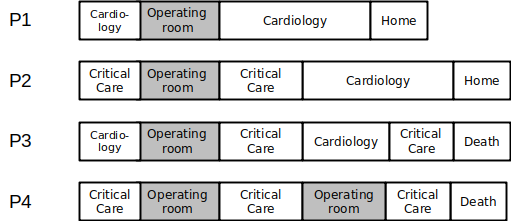Hi everyone,
I need to document surgeries in the OMOP CDM. I’m having a hard time understanding some basic notions.
In my case, a surgery defined as a collection of procedures (Anesthetic procedures, surgical procedures).
Each surgery has its own kind of specialty. If another procedure need to be made during the surgery and it is of a different specialty (when I say specialty - I mean something like “Urology”, ENT etc…) then we open a new surgery.
For example: A surgery with ID 33645 occures, with a specialty “Orthopedic” (i.e. the act. surgical dpt. and not the physical department of which the surgery occures) - the surgery is then finished and then immidiately afterwards the patient is having another surgery, with a different surgery with a different ID 33646 this time with a different staff with another specialty - “Plastics”.
My question is:
Where are the surgeries can be documented in OMOP (not the procedures), which have a lower level of granularity then procedures?
And I guess I can link surgeries to their corresponding procedures via FACT_RELATIONSHIP table.
Maybe in observation as well?
And another important question - In our case, what makes sense more:
-
VISIT_DETAIL_ID can represent the surgery itself (in case of procedure occurrences) and then we know
where the surgeries are documented. -
VISIT_DETAIL_ID can have more than one surgery (a patient can have a specific visit, inside his inpatient hospital visit, and the patient is being involved in several surgeries.
So in short, how can a researcher, can aggregate procedure records by Surgery level?
Thenks!!!

 )
)